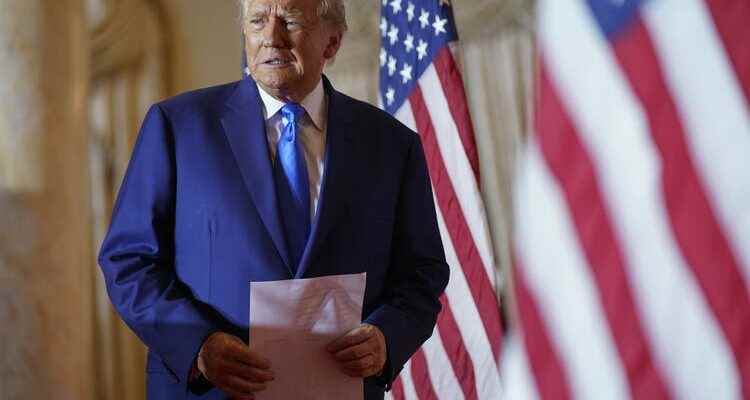In the United States, several tax returns from former President Donald Trump have been released after long arguments. It is revealed that in several periods he did not pay taxes, although he praised his wealth. Do we look far enough into the past?
Now some of Trump’s tax records are public.
After years of legal wrangling, a congressional committee has released tax filings belonging to former President Donald Trump. The Democratic-dominated Budget Committee of the US House of Representatives approved the documents for six years. This puts the former president and potential candidate for the 2024 White House a little further on the defensive, after the first details became known ten days ago.
Nothing was voluntary
Thus ending protracted legal and political wrangling that could have been avoided had Trump followed presidential precedent and voluntarily released his tax records. Further federal and state investigations are pending.
In fact, Democrats had been pushing for the publication of crucial documents for a good three years and finally achieved in a roundabout way that they were released in November Ways and Means Committee were made available. This non-partisan committee of the American Congress, with budgetary, financial, tax and social policy competence, finally decided to personal and business tax records of the former president and his wife to publish. The Supreme Court had previously rejected Trump’s final attempt to withhold the documents.
Biggest move since Nixon
In view of the numerous investigations and controversies surrounding his person, it may not be as easy for the man to lead a new campaign for the presidency as in the past. Ever since the disappointing performance in the recent midterm elections, more and more key members of the Republican Party have been asking themselves whether Trump is still the most suitable candidate to lead the Grand Old Party (GOP) and possibly also the country.
The release of Trump’s tax records is the largest such action Congress has taken in half a century. A similar action involving a president has not taken place since 1973. At that time, the focus was on President Richard M. Nixon’s tax returns before they were finally submitted to a congressional committee.
While much essential information had already come to light, including through the two reports released last week, are as of Friday morning Thousands of pages of documents been released with new details. These are not only the individual tax returns of Donald Trump and his wife Melania, but also business documents for the many companies that make up the extensive complex business organization of real estate mogul composed.
Has Trump benefited from his own tax policy?
Many were hoping for insight into the complexities of Trump’s finances, and conspiracy-themed critics were hoping for clues he may have benefited from the tax policies he initiated as president. These included the Tax Cut and Jobs Act of 2017, which provided a number of tax breaks and cuts for companies and wealthy individuals. However, the famous allegations only seem to be confirmed to a limited extent, on the contrary: Trump’s own tax law could even have cost him dearly.
The “Act” obviously contained some provisions that most likely gave it a tax advantage, including a reduction in the alternative minimum tax for high earners. On the other hand, however, he significantly restricted the possibilities for deductions that Trump could have asserted from 2018 and beyond. This is due to Republican restrictions on crediting state and local taxes that have been paid.
Salary not always donated
The so-called SALT deduction primarily hit higher earners in cities and states with high taxes like New York, including Donald Trump and his wife. In fact, they say they paid $8.4 million in state and local taxes in 2019. Because of the limitations contained in his tax code, they could only include $10,000 of those taxes paid on the federal tax return. A downside, though mitigated by other sections of the law that favor wealthier taxpayers.
However, it is once again clear that Trump was not always so precise with the truth. During the election campaign, for example, he loudly announced that he would donate the president’s salary of around $400,000 a year to charity if he got the chance. However, at least in 2020, that was demonstrably not the case, perhaps because he was simultaneously claiming sizeable business losses. According to available records, Trump paid $1.1 million in federal income taxes in the first three years of his presidency, including just $750 in federal income taxes in 2017, his first year in office. In 2020, he paid no taxes as his income had shrunk and his business losses increased.
Do the documents go back far enough?
Despite the release of Trump’s tax records for the past few years, important questions may still remain unanswered. Among other things, critical minds draw attention to the huge losses that Trump claimed to reduce his taxes in 2015 and 2016. The presentations appear to be from previous tax years and have not yet been approved by the tax authorities. On this basis, it is difficult to judge whether the procedure was legal or not.
Apparently, Trump had about $105 million in losses carried forward into 2015 and $73 million in losses into 2016, but those amounts came from the staggering $700 million loss Trump originally claimed, according to New York Times research already posted in 2009. So the “elephant stays in the room,” they say.
